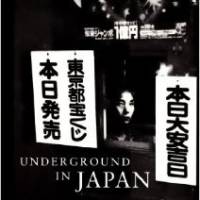First published in 1992, "Underground in Japan" is Rey Ventura's account of his life as a illegal day laborer in the construction areas and docks of Yokohama's Kotobukicho district.
Underground in Japan, by Rey Ventura
208 pages
St. Edmundsbury Press, Nonfiction.
After studying political science at Trinity College in Quezon City, in the Philippines, Ventura spent a year in Japan on a student visa in the early '90s. He made connections with migrants living on the fringes of society and, after the course ended and his visa expired, he chose to remain in Japan and work alongside them.
"I would have to become invisible," he writes, "like tens of thousands of Filipinos who live by the system we call 'T.N.T.' — 'tago-ng-tago' — 'always in hiding.' "
He began working illegally in Yokohama as a "standing man," a migrant day laborer.
Ventura's memoir engages the reader from the first page, in crisp, detailed prose he makes the wide cast of characters that populate this world come alive: from the women who drift into prostitution to the middle-class men who left their countries to become "standing men" — they all came to pursue a better life for themselves and their families.
Ventura's stories are as powerfully universal today as they were 20 years ago. Toward the end of the book he writes: "As the Filipino underground grows in Japan, so the Japanese underground takes hold in Manila, Cebu, Baguio, Davao. Indeed, they are the same underground, catering for needs that the legitimate channels do not meet."
Read archived reviews of Japanese classics at jtimes.jp/essential.



















With your current subscription plan you can comment on stories. However, before writing your first comment, please create a display name in the Profile section of your subscriber account page.